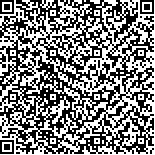本文已被:浏览 1173次 下载 486次
投稿时间:2021-03-02 网络发布日期:2021-09-20
投稿时间:2021-03-02 网络发布日期:2021-09-20
中文摘要: 目的 对特发性膜性肾病(IMN)患者尿中性粒细胞明胶酶相关脂质运载蛋白(NGAL)及肾损伤分子-1(KIM-1)的水平进行检测,探讨其与肾小管间质损伤和IMN病理分期的关系,由此判断其临床价值。方法 选自山西医科大学第二医院肾内科2017年5月到2018年8月行肾穿刺活检确诊为IMN的患者81例为病例组,另选择同期健康体检者55例作为对照组,对所有研究对象行尿NGAL及KIM-1检测。依据Ehrenreich-Churg分期法对病例组进行分期,分为Ⅰ期和Ⅱ期两组;参照Banff病理评价标准IMN理损伤程度分为轻度、中度和重度三组;对不同组别患者尿NGAL及KIM-1水平进行比较分析,探讨IMN患者尿NGAL和KIM-1与肾小管间质病理损伤程度的关系,并分析尿NGAL及KIM-1与肾小管间质损伤相关临床化验指标[α1微球蛋白(α1-MG)、尿N-乙酰-β-D-氨基葡萄糖苷酶(NAG)及尿视黄醇结合蛋白(RBP)]的相关性,进而绘制对IMN患者肾小管间质损伤诊断效能的ROC曲线。结果 病例组尿KIM-1[0.49(0.15,1.44)μg/L vs 0.06(0.04,0.17)μg/L,Z=6.91,P<0.01]、尿NGAL水平[34.72(21.15,72.92)μg/L vs 9.54(6.17,19.56)μg/L,Z=7.38,P<0.01]明显高于对照组,差异有统计学意义。病例组Ⅰ期、Ⅱ期患者尿KIM-1、尿NGAL水平、肾小管间质损伤评分比较差异有统计学意义(P<0.01)。肾小管间质损伤轻度、中度、重度三组尿KIM-1水平、尿NGAL水平比较差异有统计学意义(P<0.01)。Spearman直线相关分析显示,IMN患者尿KIM-1和NGAL分别与尿RBP、尿α1-MG、尿NAG呈正相关关系(P<0.05)。ROC曲线结果显示,尿KIM-1、NGAL及二者联合检测对IMN患者肾小管间质损伤诊断效能的曲线下面积(AUC)为0.850、0.874、0.916,特异度分别为95.1%、92.6%和92.7%,敏感度分别为63.6%、69.1%和75.3%。而尿RBP、尿α1-MG、NAG的AUC为0.712、0.636、0.719,特异度分别为51.9%、58.0%和59.4%,敏感度分别为81.8%、67.3%和83.6%。结论 尿KIM-1和NGAL与IMN肾小管间质损伤严重程度密切相关,并且可以反映IMN病理损伤严重程度,二者联合检测对诊断IMN肾小管损伤具有较高的临床价值。
中文关键词: 特发性膜性肾病 中性粒细胞明胶酶相关脂质运载蛋白 肾损伤分子-1 肾小管间质损伤 尿液
Abstract:Objective To explore the associations of urinary neutrophil gelatinase-associated lipocalin (NGAL) and kidney injury molecule-1 (KIM-1) levels with tubulointerstitial injury and pathological stage of IMN so as to judge their clinical value. Methods A total of 81 IMN patients diagnosed by renal biopsy from May 2017 to August 2018 were selected as case group, and 55 healthy people during the same period were served as control group. The combined detection of urine NGAL and KIM-1 was conducted in all subjects. According to Ehrenreich-Church staging criteria, the patients were divided into stage Ⅰ and stage Ⅱ subgroups. According to pathological evaluation of Banff′s criteria,the degree of renal tubulointerstitial pathological injury of the patients were divided into mild, moderate and severe subgroups. The urine NGAL and KIM-1 levels were compared among different groups to analyze their associations with tubulointerstitial pathological injury and related clinical laboratory indexes,including α1 microglobulin (α1-MG), urine N-acetyl-β-D-glucosaminidase (NAG) and retinol binding protein (RBP), and their ROC curves were drawn to measure the diagnostic efficiency of tubulointerstitial injury in IMN patients.
Results Urinary KIM-1 [0.49 (0.15, 1.44)]μg/L vs 0.06(0.04,0.17)μg/L, Z=6.91,P<0.01] and urinary NGAL levels [34.72 (21.15, 72.92)] μg/L vs 9.54(6.17,19.56) μg/L, Z=7.38, P<0.01] in case group were significantly higher than those in control group. In case group, there were significant differences in urinary KIM-1 and NGAL levels and tubulointerstitial injury scores among stage Ⅰ and stage Ⅱ subgroups(P<0.01)and in urinary KIM-1 and NGAL levels among mild, moderate and severe subgroups (P<0.01). Spearman′s linear correlation analysis showed that urine KIM-1 and NGAL levels were positively correlated with urine RBP, urine α1-MG and urine NAG in IMN patients (P<0.05). ROC curve showed that the AUC of urinary KIM-1, NGAL and their combination in the diagnosis of renal tubulointerstitial injury in IMN patients were 0.850, 0.874 and 0.916, with specificity of 95.1%, 92.6% and 92.7%, and sensitivity of 63.6%, 69.1% and 75.3%, respectively. The AUC of urine RBP, α1-MG and NAG were 0.712, 0.636 and 0.719, with specificity of 51.9%, 58.0% and 59.4%, and sensitivity of 81.8%, 67.3% and 83.6%, respectively. Conclusion Urinary KIM-1 and NGAL are closely related to the severity of tubulointerstitial injury and pathological changes. The combined detection of KIM-1 and NGAL has a higher clinical value in the diagnosis of tubulointerstitial injury of IMN patients.
keywords: Idiopathic membranous nephropathy Neutrophil gelatinase-associated lipocalin Kidney injury molecule-1 Renal tubular interstitial injury Urine
文章编号: 中图分类号: 文献标志码:A
基金项目:山西省国际科技合作项目(2015081036)
| Author Name | Affiliation |
| HUO Fei-xia*,ZHU Guo-zhen | *Shanxi Medical University,Taiyuan,Shanxi 030001,China |
引用文本:
霍飞霞,朱国贞.联合检测尿KIM-1及NGAL在特发性膜性肾病中的应用[J].中国临床研究,2021,34(9):1185-1189.
霍飞霞,朱国贞.联合检测尿KIM-1及NGAL在特发性膜性肾病中的应用[J].中国临床研究,2021,34(9):1185-1189.
